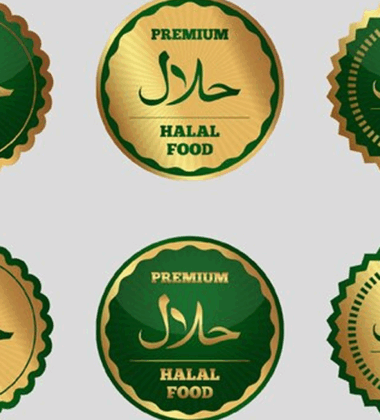In the age of cognitive overload, food is no longer just about nourishment—it’s about performance. As more consumers seek mental clarity during their workday, commute, or study sessions, demand is growing for focus-friendly foods that provide clean energy, sustained attention, and mood balance.
This shift is fueling a new frontier in food innovation: friendly foods—products that are thoughtfully formulated to support mental focus without stimulants, sugar crashes, or synthetic enhancers. These snacks, drinks, and supplements are finding their spotlight at global industry events like the Global Products Expo, set for June 26–28, 2025, at the New Jersey Expo Center.
This guide will show you how to formulate, position, and launch F&B products that truly help consumers focus—whether you’re building an office snack line, a functional beverage brand, or a clean-label supplement.
What Are “Friendly Foods” for Focus?
In the context of product development, friendly foods refer to clean, minimally processed consumables that are:
- Gentle on the digestive system
- Free of harsh stimulants or additives
- Enriched with functional ingredients known to support brain function, attention span, and memory
- Designed for sustained release of energy (vs. short-lived spikes)
These products appeal to working professionals, students, gamers, and health-conscious consumers looking for mental support without compromise.
Step 1: Start with the Right Functional Ingredients
The backbone of any focus-friendly food is its ingredient list. Choose evidence-backed nutrients known to support brain health, alertness, and neurotransmitter activity. Top ingredient categories include:
1. Natural Nootropics
- L-theanine: promotes calm focus, especially when combined with caffeine
- Rhodiola rosea: helps with mental fatigue and stress management
- Citicoline: boosts mental energy and cognitive performance
2. Brain-Supporting Nutrients
- Omega-3 DHA: supports memory and cognitive flexibility
- Choline: key in neurotransmitter synthesis (especially acetylcholine)
- Magnesium L-threonate: improves memory and learning ability
3. Glucose Stabilizers
- Low-GI fibers like inulin, oat beta-glucans, and chicory root
- Slow carbs from lentil, chickpea, or ancient grain flours
- Healthy fats like MCT oil or nut butters to reduce post-snack crashes
4. Mood and Stress Supporters
- Ashwagandha: helps regulate cortisol
- Saffron extract: clinically shown to support positive mood
- Adaptogenic mushrooms (Lion’s Mane, Reishi): used for long-term cognitive support
Step 2: Choose the Right Format for Your Audience
Snackability and function must go hand in hand. Choose a format that aligns with when and where consumers need focus most.
| Format | Ideal For | Benefits |
| Snack bars | Professionals, students | Convenient, easy to dose ingredients |
| Gummies | General wellness crowd | Tasty and portion-controlled |
| RTD beverages | On-the-go energy | Easily infused with nootropics or adaptogens |
| Nut/seed blends | Keto and paleo consumers | Natural fats and minerals for brain function |
| Functional chocolates | Mood enhancement | Pairs well with saffron, magnesium, or ashwagandha |
Expo Insight: At Global Products Expo 2025, exhibitors are emphasizing single-serve, resealable, and sustainable packaging—features that support both portability and responsible consumption.
Step 3: Focus on Clean Labeling
Today’s buyers—especially health-conscious consumers—read ingredient labels closely. Your friendly food product should be:
- Free from artificial colors, sweeteners, or preservatives
- Low or no added sugar
- Gluten-free and allergen-conscious, when possible
- Non-GMO and plant-based for broader appeal
Don’t just say your snack is “clean”—show it with transparent labeling, certifications, and QR-code-enabled packaging for deeper ingredient stories (a rising expo trend in 2025).
Step 4: Pair Function with Flavor
Even the best focus-friendly food won’t succeed unless it tastes great. Use the following strategies to make flavor a strength, not a compromise:
- Complement functional ingredients (e.g., tart berry flavors to mask herbal adaptogens)
- Play into sensory nostalgia (e.g., peanut butter + jelly with added choline)
- Leverage trending pairings (e.g., saffron + dark chocolate or green tea + citrus)
Don’t forget texture. Crunchy, chewy, or melt-in-the-mouth sensations can enhance mindful snacking—a growing subtrend under the umbrella of functional foods.
Step 5: Craft the Right Messaging
In the crowded wellness space, your story matters. Don’t just claim “focus support”—explain how and why your product works. Messaging should cover:
- Target benefit: e.g., “Built to fuel long meetings and creative sprints”
- Science-backed ingredients: e.g., “Formulated with magnesium L-threonate and Lion’s Mane for mental clarity”
- Brand values: e.g., “Zero artificial stimulants. All focus. No crash.”
Expo-ready packaging now often includes side-panel science snippets or QR codes linking to video explainers or whitepapers. This educational layer builds consumer trust and retailer buy-in.
Step 6: Test with Real-Life Scenarios
One powerful expo trend is live product testing under real conditions. Set up your focus-friendly food for success by testing it in scenarios where people need clarity and concentration:
- Workplace performance: Co-working offices, virtual meeting feedback
- Study sessions: Partnerships with student focus groups or exam week trials
- Gaming environments: Twitch streamers or esports micro-influencers
Use this data to refine dosing, timing, and delivery format—then integrate feedback loops into your next R&D cycle.
Step 7: Plan for Cross-Channel Distribution
Your friendly foods should meet consumers where they live, work, snack, and shop. Top distribution opportunities include:
- Corporate wellness programs
- College bookstores and vending machines
- DTC websites with smart bundling options
- Functional aisles in natural grocers and convenience stores
- Expo booths and digital samplers at trade events
Bonus: Add subscription options and post-purchase education (e.g., email guides on “eating for mental clarity”) to boost LTV.
The Business Case for Focus-Friendly Foods
Consumer interest in friendly foods that promote mental clarity is no longer niche. It aligns with key market forces:
- Work-from-anywhere culture seeking performance foods
- Gen Z and Millennials prioritizing mental health through diet
- Increased demand for clean, low-sugar alternatives to energy drinks
- Cognitive wellness as part of preventive health
According to recent trend forecasts presented at Global Products Expo 2025, cognitive health products are projected to grow 14% YoY, outpacing many other functional food categories.
Final Thought: Functional Clarity Is the New Clean Eating
If your next product is clean, delicious, and offers real support for mental focus, you’re not just following a trend—you’re helping define the future of food.
Start by choosing smart brain-friendly ingredients, clean packaging, and snack formats that meet real-world consumer needs. Align your development with data, science, and sensory appeal. And above all, create friendly foods that help people feel—and think—better every day.





